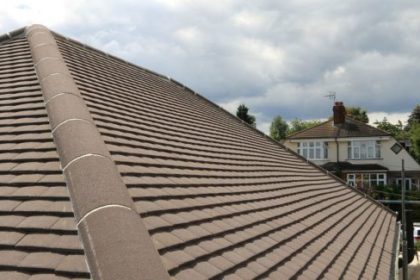 Which Roofing Material Is Best for High Winds?
Which Roofing Material Is Best for High Winds?
The past few weeks have shown us how extreme and damaging winds can be in the UK. If you were unfortunate enough to be in one of the worst-affected areas, your roof may have suffered damage and proved expensive to repair.
High winds can happen at any time of the year, and your roof is vulnerable. If you don’t want to be forking out for repairs after every storm, it’s vital to make sure you have the roofing materials that are best for high winds. So which of the common materials are most resistant?
Slate
Slate roofing has been popular for hundreds of years, and a big part of that is its durability and resistance to extreme weather. The highest-quality slate will resist wind speeds of at least 130 mph — and that’s the kind of wind you’d expect in the middle of a Caribbean hurricane.
The biggest downside of slate roofing is the cost, but you’re likely to make that back by minimising repair expenses. You may not even need that highest-quality slate — but you do need it fitted expertly.
Concrete Tiles
Part of the strength of the slate is its weight, which anchors it securely to the roof deck, and this quality is shared with concrete tiles. Their natural resistance to high winds can be enhanced by techniques like interlocking the tiles, and by fixing them securely.
Even if you’re lucky and don’t suffer high winds, concrete tiles are extremely durable. That means you’ll be paying for less maintenance, over the years, than with many other roofing materials.
Clay Tiles
There are good reasons why the iconic clay tile roof is the most common. Relatively cheap and durable, they also resist high winds effectively, as long as they’re expertly installed.
Clay tiles come in many colours and designs so that you can achieve the aesthetic you want and improve your home’s street appeal. It’s also fairly cheap and simple to replace individual tiles, so it won’t cost a fortune if a single tile should be damaged by extreme weather.
Metal Roofing
Although traditionally rare, metal roofing has grown in popularity in recent years. Various metals can be used on your roof, including zinc, aluminium or copper, and the appropriate coating will ensure they last well.
Although much lighter than slates or tiles, metal roofing can be extremely tough, and if it’s fitted correctly it will resist high winds of at least 100 mph. Combined with durability and fire resistance, it can make an effective choice.
Liquid Rubber Roofing
A fairly new roofing technique, liquid rubber roofing is usually associated with flat roofs, but it can also be an effective material for pitched roofs. An instant setting, fully bonded membrane, it can be applied over whatever worn or damaged material you already have, reducing the cost.
Liquid rubber roofing provides a seamless, edge-to-edge covering, which gives it an immediate advantage in high winds — there’s nothing to break or blow away. And, while it’s resisting the wind, its insulation and waterproofing will keep out the extreme weather.
Professional Installation and Maintenance
Of course, the best roofing materials will only be effective if they’re installed by experts. They also require ongoing maintenance, although this should be minimal with the right materials and fitting.
To make sure your roof stands up to future storms (named or not), give Empire a call to take advantage of many years of expertise in installing and maintaining the most effective roofing materials.









